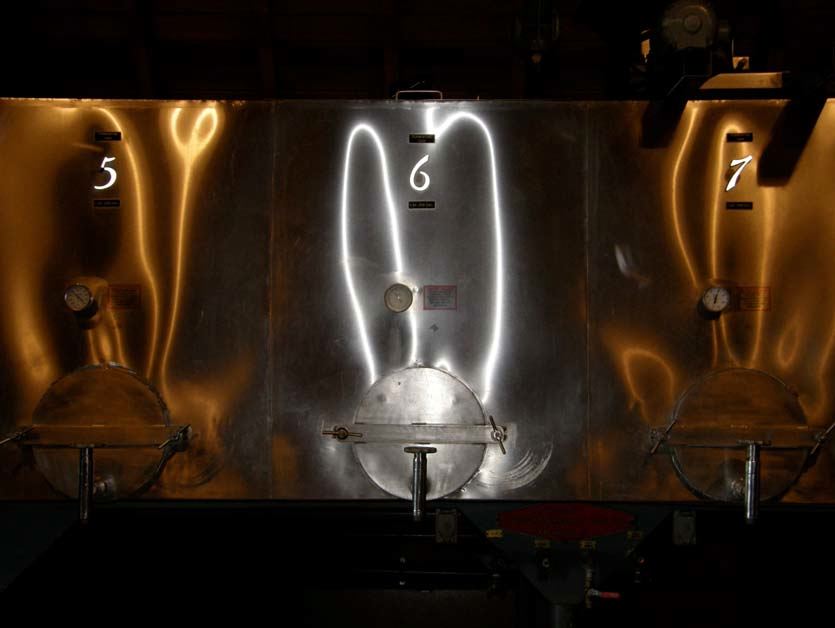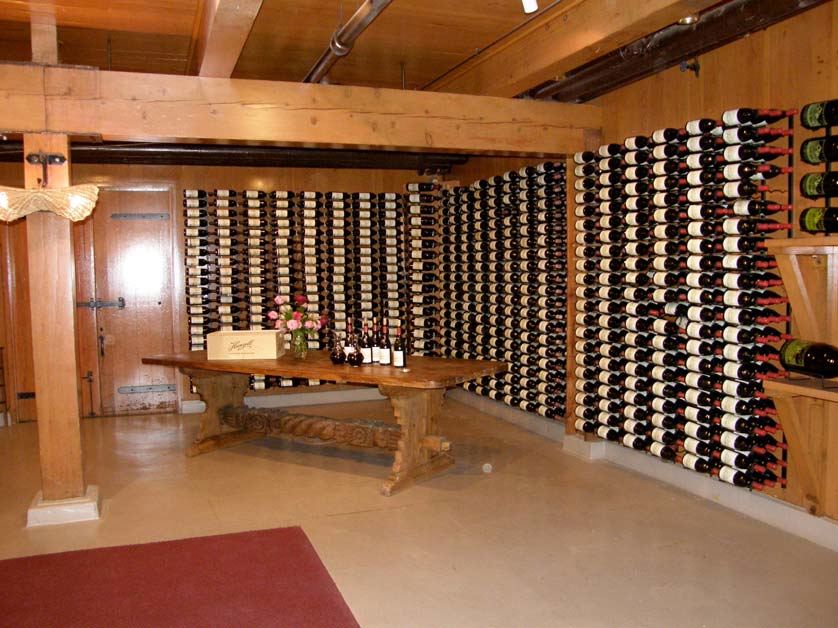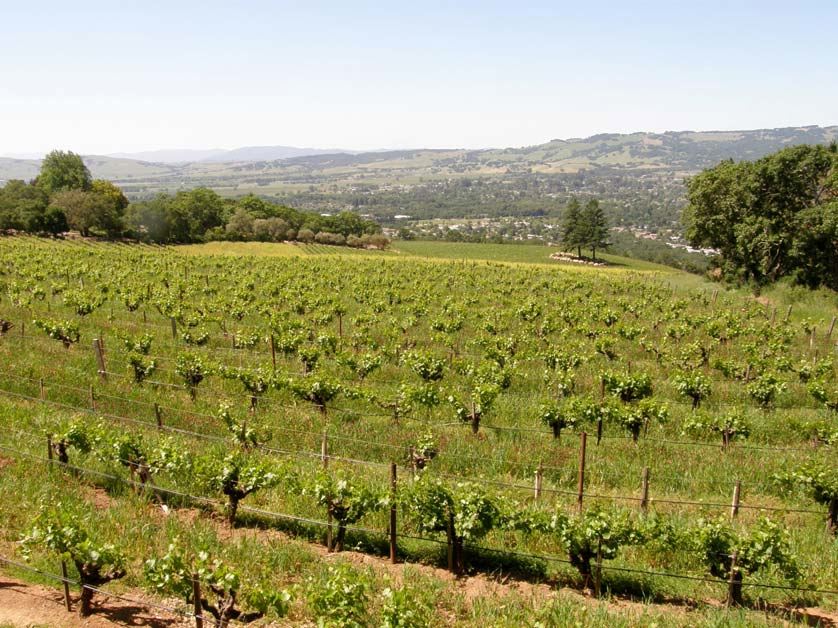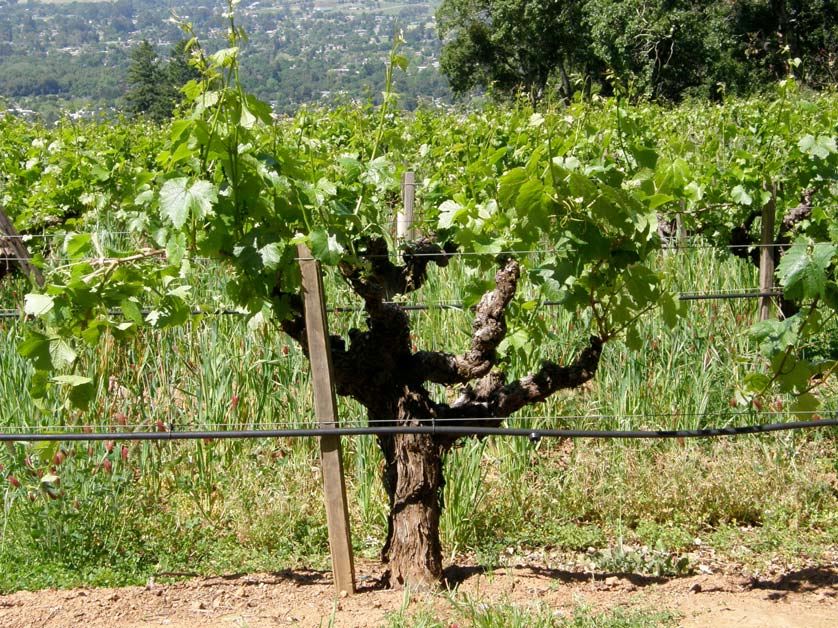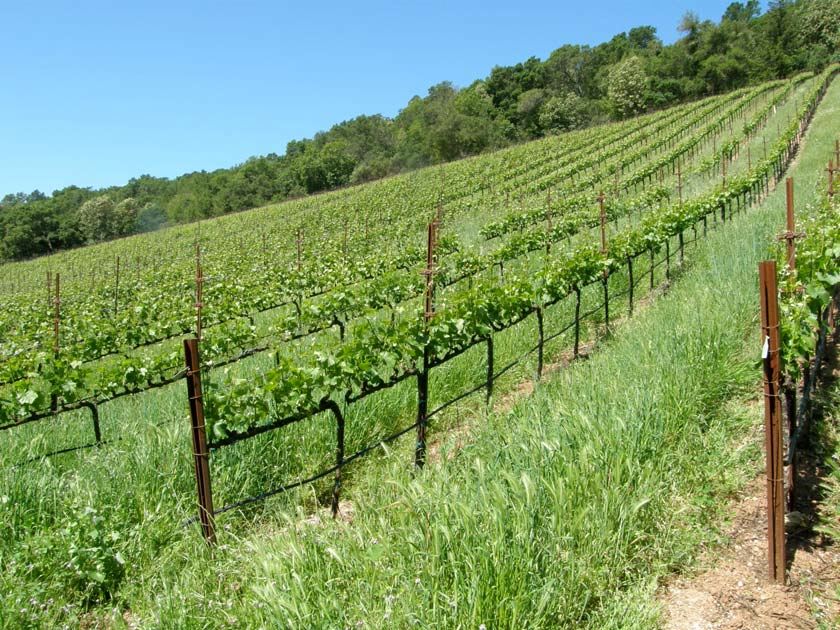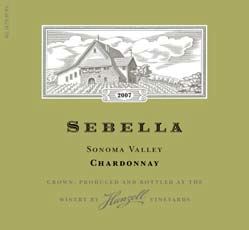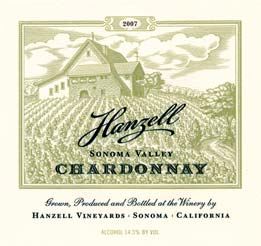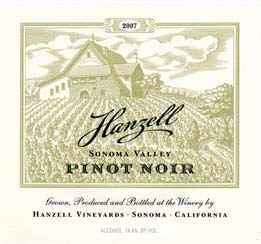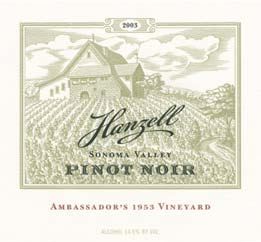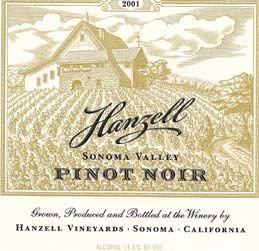Hanzell Vineyards: Revered After More Than 50 Vintages
“More and more consumers are looking beyond wines with high scores
based purely on hedonic quality in favor of wines of character and
authenticity that reflect their place of origin and story. Perhaps the grape
variety best suited for this kind of wine is Pinot Noir”
........
Winemaker Brian Croser, The World of Fine Wine, Issue 26, 2009
In the rush to find the latest cult Pinot Noir, we often neglect the heritage wineries of California that are
cherished for their long tradition of excellence. Hanzell Vineyards was one of California’s first boutique wine
estates, and among producers of both estate grown, produced and bottled Pinot Noir and Chardonnay, is exceeded in longevity by only Mount
Eden Vineyards. Martin Ray started his eponymous and innovative winery in the early
1950s (it became known as Mount Eden Vineyards in 1972) at a time that diplomat James D. Zellerbach and
his wife, Hana, acquired land in the Mayacamas Mountains one mile north of the Sonoma Plaza. The
Zellerbachs planted their first Pinot Noir in 1953 using cuttings from the Martin Ray estate (now commonly
referred to as the Mount Eden clone). The legend holds that the Martin Ray Pinot Noir cuttings were acquired in
a clandestine late night raid on a Napa Valley vineyard by Hanzell’s first winemaker, Brad Webb. At Hanzell,
small amounts of wine were sold starting in 1957, but 1965 was the first full-scale commercial vintage. The
original Pinot Noir vines at Mount Eden Vineyards were pulled out in 1997 and the original 2.2-acre block of
Pinot Noir at Chalone planted in 1946 was replaced in 2003, making the original plantings at Hanzell the oldest
continually producing vineyard of Pinot Noir and Chardonnay in the New World. Selections from the original
plantings at Hanzell have become known as the “Hanzell clone,” and have been planted throughout California.
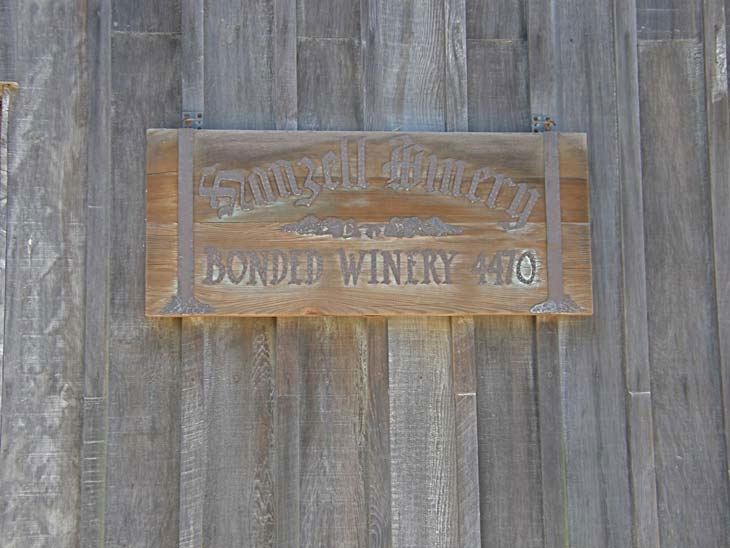
James D. Zellerbach became fond of Burgundy and its wines while serving in Europe as the American
Ambassador to Italy. He was sent by President Truman to head the implementation of the Marshall Plan in Italy
after World War II. Zellerbach was also the President of Crown Zellerbach, a large forest products company of
the time. A 200-acre property overlooking the town of Sonoma was acquired in 1948, and in 1956 after
returning from Italy, the Zellerbachs constructed a small gravity-flow winery of redwood and indigenous stone
fashioned after the press building at Burgundy’s famed Clos de Vougeot.
Zellerbach hired Ralph Bradford (Brad) Webb (1922-1999) in 1956 as winemaker and together they set out to
combine Burgundian winemaking traditions with New World innovations. Reportedly, after hiring Webb as
winemaker, Zellerbach gave him a bottle of DRC Romanee-Conti and told him he wanted to produce wine like
that. Many winemaking “firsts” were developed by the pair at Hanzell, but Webb in particular has failed to
receive the recognition for his winemaking innovations.
In a recently published article in Wines & Vines (“Hanzell and ML 34,” January 2010), author John L. Ingraham,
a microbiologist and assistant professor of enology at University of California at Davis in the 1950s and a
collaborator with Webb, described how the pair isolated the ML 34 strain, now designated as the genus and
species Oenococcus oeni, sourced from the Louis M. Martini Winery. Webb had been perplexed by the failure
of malolactic fermentations to start in the new winery at Hanzell Vineyards. In the 1950s, malolactic
fermentation was incompletely understood. Ingraham notes, “In 1959, Webb and I took ML 34 to Hanzell to
study it under winery conditions. There, we added 100ml of a culture grown in a medium nutritionally enriched
with tomato juice to 4 gallons of must that had been fermented to 1° Brix. Two days later, all its malic acid was
gone. Then we added 200ml of the lees of this starter culture to a 100-gallon lot of Pinot Noir must that had
been fermented to 3° Brix, again initiating a malolactic fermentation that completed 21 days later.” Webb
exclaimed later in an interview, “That was the most exciting moment of my life, really.” The pair were not the
first to induce malolactic fermentation from a pure culture of a known strain of bacterium, but Hanzell was the
first winery in North America to complete induced malolactic fermentations. If you visit Hanzell today, you can
still see Tank 21 (pictured below), one of the original glass-lined stainless steel tanks at the winery and the one
in which the first malolactic fermentation occurred.
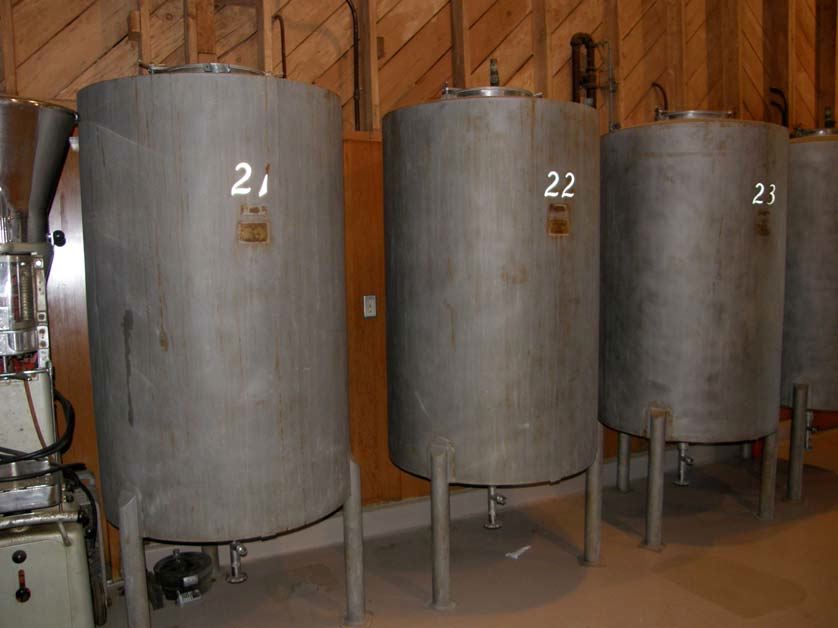
There were many other firsts at Hanzell. Custom designed one ton stainless steel fermenters were the first of
their kind to allow complete control of fermentation temperature. Within the double walls, coolant circulated,
dissipating the heat of fermentation to maintain a desired temperature. Today, there are jacketed stainless
steel tanks in practically every winery in the world. The use of inert gas to blanket young wine in tank was
relatively unknown in the 1950s. Webb outfitted the tanks at Hanzell with fittings that allowed nitrogen to cover the wine during aging, and at bottling, every bottle was treated with nitrogen just before it was filled with wine.
The practice of using inert gas is commonplace in winemaking today.
Hanzell was the first California winery to exclusively use French oak barrels for aging wine. In the late 1950s
and early 1960s, California wineries aged wines in large vessels, often made of redwood, or in small barrels
composed from American oak. Zellerbach and Webb realized that small French oak barrels had to be used to
replicate the wines of Burgundy. The winery’s use of imported Sirugue French oak barrels had a major affect
on the quality of the wines produced and the wine industry quickly recognized the merits of French oak aging.
The 2007 vintage marks the 50th year that Hanzell has used Tonnellerie Sirugue.
The “Hanzell house style” was developed by Brad Webb and has been maintained through over 50 vintages by
winemakers Kim Giles, Bob Sessions (28 vintages beginning in 1973), Michael Terrien, and today, Michael
McNeill. Hanzell has never succumbed to the oaky, buttery style of California Chardonnay or the highly
extracted, ripe and fruit-driven style of California Pinot Noir that have become so popular over the last twenty
years. Rather, the style emphasizes restraint, nuance, subtlety, food compatibility and above all, age ability.
The wines speak of the unique terroir of this hillside estate, blessed with a concentration of Red Hill volcanic
soil rarely found in Sonoma County (see photo below) and cooled by the winds from the Petaluma Gap. At
Hanzell, the emphasis is on the vineyard and not the winemaker who is but a shepherd of the Hanzell tradition.
Michael McNeill, who blended and bottled the 2007 vintage and crafted the 2008 vintage in its entirety, told me,
“I don’t want my fingerprints on the wine.”
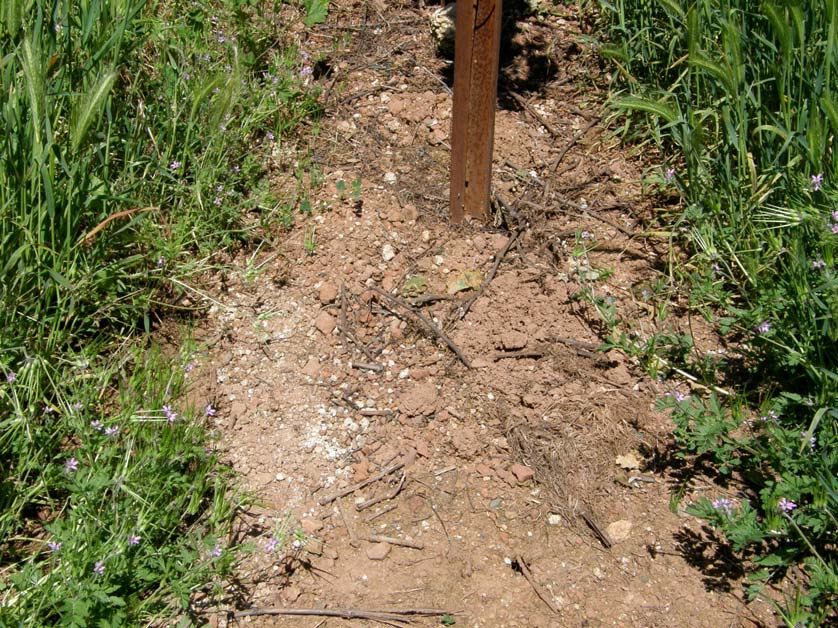
Michael McNeill (pictured below in the Hanzell wine library) has crafted wine for the past two decades in
California, Oregon and Burgundy. His experience at Chalone Vineyard with Michael Michaud left him with a
reverence for the time-honored traditions of winemaking. He works closely with Winemaker Emeritus Bob
Sessions and Jose Ramos, Director of Vineyard Operations. Bob Sessions was the winemaker and general
manager of Hanzell Vineyards from 1973 to 2001. He began his winemaking career at Mayacamas Vineyards
in 1964 under the guidance of Brad Webb, Hanzell‘s winemaker at the time. He left Mayacamas to become
production manager for Souverain Cellars (now Rutherford Hill) and then joined his friend Warren Winiarski to
start Stag’s Leap Wine Cellars. While that project was in its early stages, he was lured to Hanzell Vineyards by
Brad Webb in 1973. Sessions was able to recognize Ambassador Zellerbach’s vision for the property and
maintain the goal of age-worthy terroir-driven wines for nearly three decades.
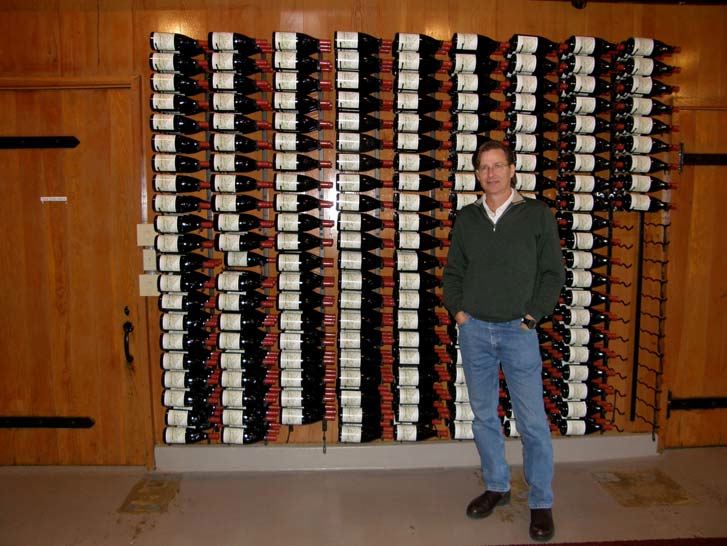
A new winemaking facility and cave were completed in July 2004 to accommodate the increased wine
production which has now grown to 6,000 cases of estate grown, estate produced and estate bottled Pinot Noir
and Chardonnay annually. In 2002, Wine Spectator writer and critic James Laube contacted Hanzell about
TCA taint in blind tastings of the winery’s 2000 Chardonnay. Testing at ETS Laboratories in Napa Valley
showed elevated TCA levels in both Hanzell Chardonnay and Pinot Noir of 2.6 and 3.2 parts per trillion.
Initially, Hanzell, led by then President Arnold’s conviction that the TCA contamination should be made public,
was quick to acknowledge the problem and stopped sales of the current release wines. Sommeliers and
distributors continued to support the quality and desirability of the wines. Extensive testing at the winery
revealed TCA contamination on barrels, hoses, equipment and in the air. It was decided that years of chlorine
use as a disinfectant was the culprit. Consumer testing revealed that most were not cognizant of the TCA levels
in the Hanzell wines and the 2000 Chardonnay and 1999 Pinot Noir were re-released. At the time, Hanzell was
building its new winery and the TCA contamination problem was eradicated with the transfer of production to
the new facility. Arnold’s actions alerted many producers about the dangers of using chlorine in their own
wineries and she received much-deserved widespread praise from the wine industry.
The Hanzell estate consists of the following vineyards (refer to vineyard map below). 14 acres are planted to
Pinot Noir and 28 acres to Chardonnay. The 12-acre Zellerbach Vineyard, planted in 1953, also referred to as
the “Ambassador’s 1953 Vineyard,” consists of St. George rootstock grafted to Mount Eden Pinot Noir and
Wente Chardonnay. The terraced and contoured vine rows have a western exposure with slopes up to 15%.
Soils are Raynor-Montara Complex type. The 5-acre Day Vineyard was first planted by Douglas and Mary
Day, proprietors from 1965 to 1975, and consists of St. George rootstock grafted to Hanzell Chardonnay
sélection massale from the Zellerbach Vineyard. Half of the original planting remains and half was replanted in
1998 to Chardonnay. The vineyard is terraced and contoured with southwestern exposure and slopes up to
20%. Soils are Raynor-Montara Complex type. The 16-acre de Brye Vineyard was first planted by the de Brye
family in 1976 and is composed of St. George rootstock grafted to Hanzell Chardonnay and Pinot Noir
sélection massale from the Zellerbach Vineyard. Terraced and contoured vine rows have southern exposure
with slopes of 10%. Soils are Red Hill Clay Loam. The 4-acre Sessions Vineyard, planted in 1999, honors
Hanzell’s winemaker, Bob Sessions. There are 11 sub-blocks, each planted with a unique rootstock and scion
combination. The southeastern exposures catches the morning sun and enjoys minimal direct light during the
peak of the day. Rows are planted against the contours with a 38% slope. Soils are Red Hill Clay Loam type.
The 5-acre Ramos Vineyard, named in honor of Hanzell’s vineyard manager of 30 years, José Ramos, was
planted in 2001. The vines are St. George rootstock grafted to Hanzell Chardonnay sélection massale from the
de Brye and Zellerbach vineyards. Exposure is northwestern with rows planted against the contours. Soils are
Red Hill Clay Loam type.
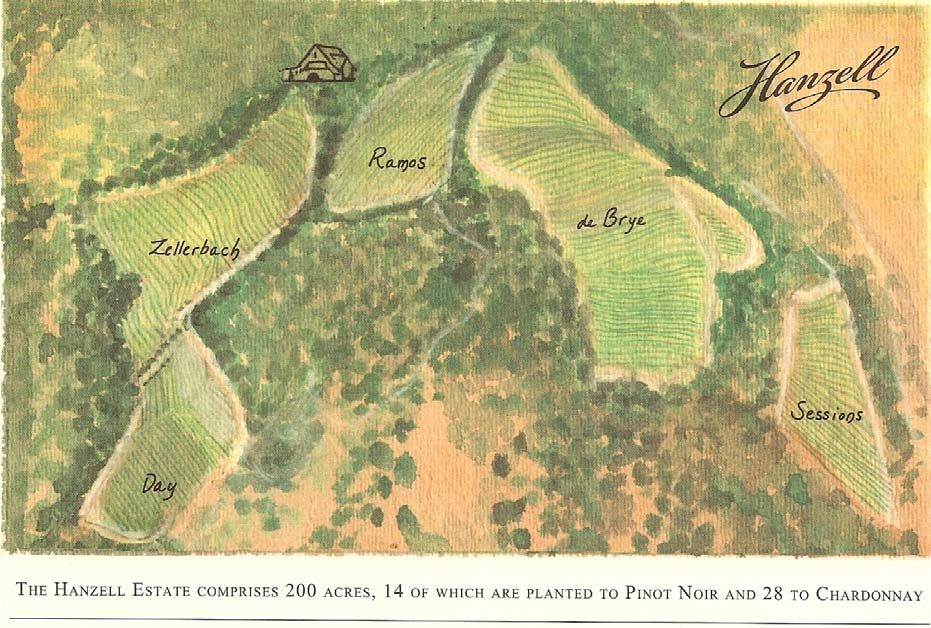
I visited Hanzell Vineyards recently, toured the vineyards and tasted with Michael McNeill. As we stood
overlooking Zellerbach Vineyard, he spoke to me about the history of Hanzell Vineyards and his “dream job.”
Listen to our conversation: “Conversation with Michael McNeill of Hanzell Vineyards"  When I walked into the old winery with its early equipment preserved, the original
one-ton stainless tanks lined up with military precision seemingly protecting the winery’s historical provenance,
I was overcome by a feeling of awe and reverence for the legacy that was on display. Then, entering the
tasting room lined with a library of Hanzell wines dating back almost a half century, I felt like speaking in
hushed tones and kneeling as if in a glorious church. It was a humbling experience to say the least.
When I walked into the old winery with its early equipment preserved, the original
one-ton stainless tanks lined up with military precision seemingly protecting the winery’s historical provenance,
I was overcome by a feeling of awe and reverence for the legacy that was on display. Then, entering the
tasting room lined with a library of Hanzell wines dating back almost a half century, I felt like speaking in
hushed tones and kneeling as if in a glorious church. It was a humbling experience to say the least.
The photos that follow show the Zellerbach Vineyard and the town of Sonoma beyond, an original vine in the
Zellerbach Vineyard, and the Sessions Vineyard.
I tasted four vintages of Hanzell Pinot Noir from 1995, 2001, 2003 and 2007, all of which had been decanted
over fours hours in advance. As dictated by tradition and the house style, the Hanzell wines are aged in
Sirugue barrels, 50% new in the case of Pinot Noir and about 33% new for the Chardonnay. The Sirugue
barrels are said to produce pure fruit expressions in Chardonnay with smoky vanillin and fresh-baked bread
aromas and highlight tropical and lemon components. For Pinot Noir, the Sirugue barrels add finesse and
subtle aromatics of exotic spices and roasted herbs.
The Pinot Noir grapes are 100% de-stemmed, cold soaked for 5 to 7 days in one-ton fermenters, and kept in
contact with the skins for two weeks following fermentation. Clone and rootstock combinations as well as
vineyard blocks are vinified separately until blending decisions are made shortly before bottling. Surprising as
it may seem, given the distinct differences between each of the individual vineyard blocks as to elevation,
aspect, slope, vine age, trellising, and clones and rootstocks, the different lots share many characteristics while
retaining subtle differences. The recent vintages of Pinot Noir are sourced from Sessions, de Brye and
Zellerbach vineyards.
All the wines displayed a moderate garnet robe with the older vintages displaying impressive retention of fresh
color. The wines were intriguingly complex, offering nuances that played hide and seek with my senses and I
would have happily spent the day revisiting each glass if time had permitted.
If you are a connoisseur of fine Pinot Noir and Chardonnay, you owe it to yourself to visit Hanzell at least once.
The historical property, the unique wines, and the warm reception will ingratiate you to Hanzell for the rest of
your life. There just isn’t anything quite like this cherished winery.

2007 Sebella Sonoma Valley Chardonnay
14.2% alc., 762 cases, $36.
Named after the owner’s children, Sebastian and Isabella. Selected from
barrels, many from newer Chardonnay vines, and crafted for current drinking.
30% barrel fermented, 18 months total elevage, 12 months in 30% new
Sirugue French oak barrels.
·
Pale straw color in the glass. Delicately
perfumed and highly nuanced revealing aromas of poached apple, freshly
toasted brioche and brown butter. Clean and bright on the palate with flavors of red
apple, baking spices and citrus. A lovely drink whose bright acidity refreshes every
sip. Good.

2007 Hanzell Sonoma Valley Chardonnay
14.3% alc., 2,777 cases, $70.
Several clones including Robert Young, Dijon 76 and Wente. One-third of
the wine fermented and aged in new Sirugue French oak barrels where
MLF was encouraged and the balance fermented cool, in stainless steel
tanks where MLF was discouraged. The new barrel component was aged
18 months and the tank-fermented portion was put into two and three-year old
barrels after 6 months and kept an additional 11 months before blending and
bottling. 69% of the vintage was selected for the estate bottling.
·
Pale straw color in
the glass. Delicate, yet complex aromatic profile that picks up intensity with time in
the glass to reveal scents of white peaches, crushed stones, toasted brioche and
lemon tart. This high-collared wine strikes a perfect balance between welcoming
finesse and impressive finishing strength and persistence. Smoothly textured with a well proportioned grip of
acidity and a very appealing underlying minerality. Flavors of golden apple, white stone fruits and subtle toast
develop strength and brilliance with air time. If you must open a bottle now, decant. A very classy wine that will
hold its own against many Grand Crus white Burgundies. Older vintages of Hanzell Chardonnay are available on the
secondary market through the internet and these will make for remarkable drinking experiences as well.

2007 Hanzell Sonoma Valley Pinot Noir
14.4% alc., pH 3.7, 1,361 cases,
$95. Aged 18 months in 50% new Sirigue barrels.
·
Still tight but this will be a
20 to 30 year wine. Well-scented black cherry fruit lurks behind scents of
oak and underbrush. Rich and satisfying sweet berry and cherry fruit with
healthy tannins and a huge, dry and fruity finish. Plenty of power but the
tannins and acidity bring everything into focus. Down the road this wine has
limitless potential. Lay it down for several years and then party like it was
2007.

2003 Hanzell Ambassador’s 1953 Vineyard Sonoma Valley Pinot Noir
14.6% alc..
·
Aromas of fresh black cherries amped to a high level. Bright
and opulent on the nose with an interesting mineral edge. My notes say,
“Remarkable!” Intensely flavored but light on its feet, with a discreetly
concentrated core of cherry and berry fruit set off by notes of bark, peat and
spice. Well-structured with the ripe, soft tannins seemingly caressing the fruit
in velvet. A remarkable wine that I felt honored to drink and one of the
greatest California Pinot Noirs I have ever tasted.
2001 Hanzell Sonoma Valley Pinot Noir
14.6% alc..
·
A complex perfume of fresh
black cherries, red anise, rock, berries and rose petals. Medium weighted with more
structure and fruit than the 1995 version offering flavors of slightly tart dried cherries,
cherry skins, and berry jam. Delicious with noticeable persistence on the bright
finish. An impressive wine with a lovely sensual modesty. Very good.
1995 Hanzell Sonoma Valley Pinot Noir
13.8% alc..
·
The nose struck me as very
“Burgundian,” sporting fresh aromas of black cherries, black raspberries, underbrush
and exotic woods. A chameleon in the glass offering many layered flavors of dried
cherries, macerated berries, loamy earth, and savory herbs. The tannins have
melted and the well-proportioned acidity brings everything into balance. A treat.
Very good.
Hanzell Vineyards wines are available for purchase on the website at www.hanzell.com. The Ambassador’s
Circle Wine Club guarantees access to the Hanzell Vineyards Pinot Noir and Chardonnay as well as the 1953
Ambassador Vineyard releases, magnums, and library vintages. Guests are received by appointment only
(707-996-3860).








